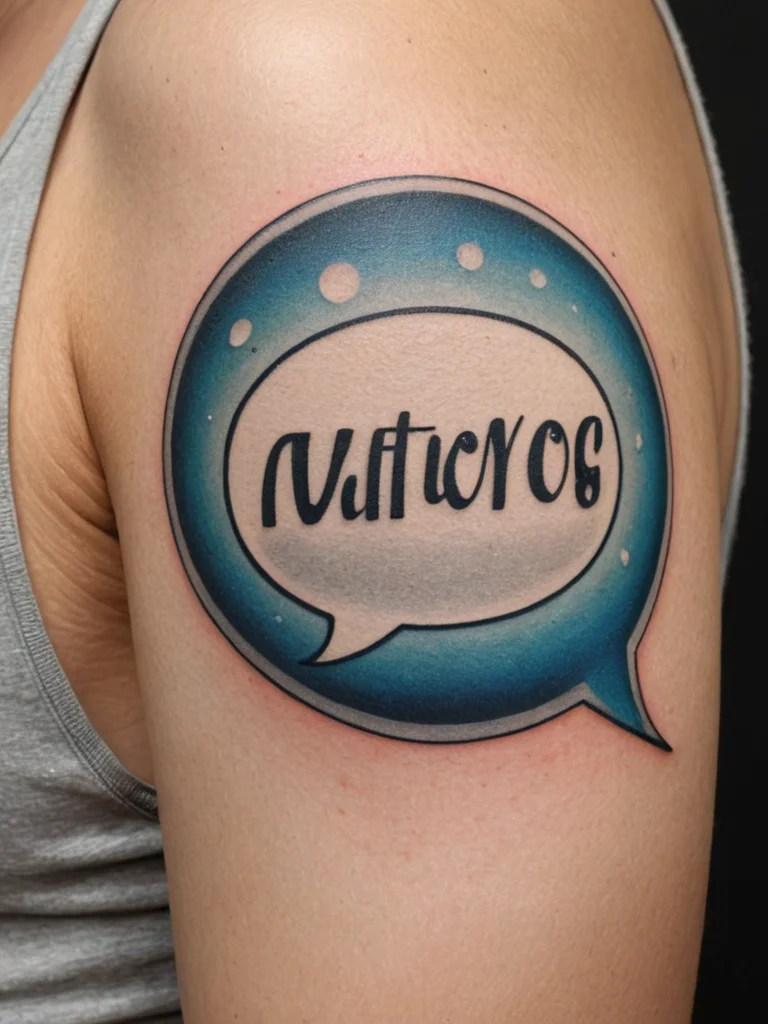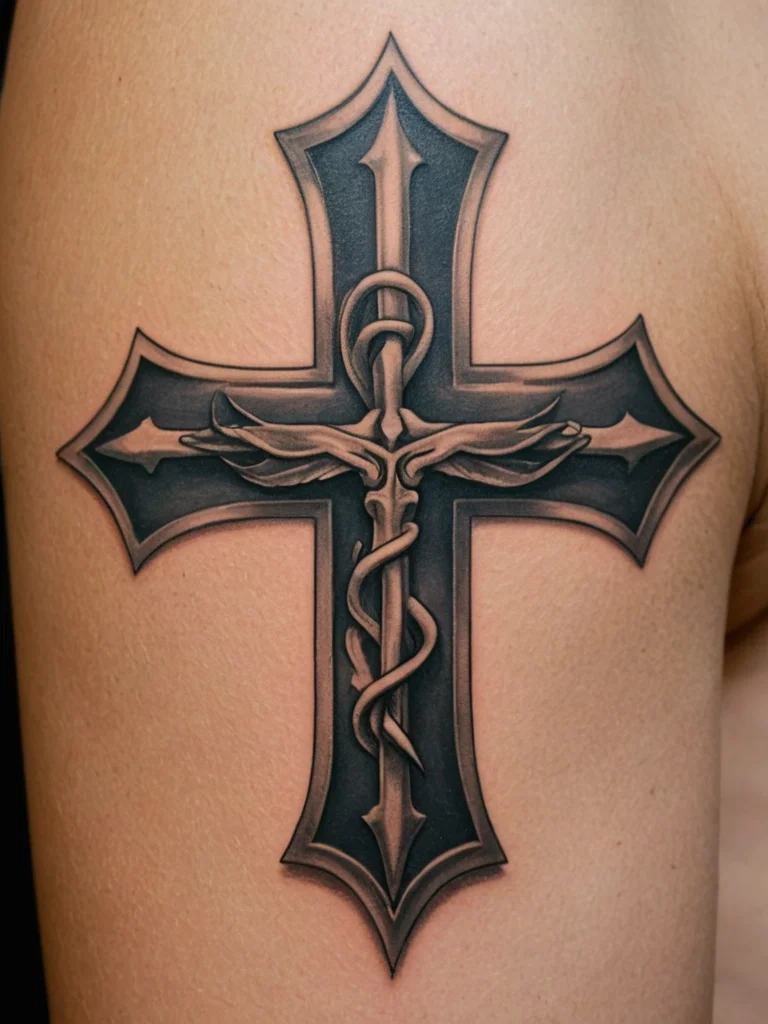Getting a tattoo is an exciting experience, a permanent expression of your individuality etched onto your skin. But beyond the artistry and aesthetics lies a critical aspect of safety: bloodborne pathogen training. Before you entrust your skin to a tattoo artist, it’s vital to ensure they’re properly trained in preventing the transmission of infectious diseases. This training isn’t just a formality; it’s a cornerstone of responsible tattooing, protecting both you and the artist from potential health risks.
Why bloodborne pathogen training matters for tattoo safety: understanding the risks
Bloodborne pathogens are infectious microorganisms present in blood that can cause disease in humans. These include, but are not limited to, Hepatitis B (HBV), Hepatitis C (HCV), and Human Immunodeficiency Virus (HIV). Tattooing, by its very nature, involves puncturing the skin, creating a potential pathway for these pathogens to enter the bloodstream. Without proper training and precautions, the risk of transmission is significantly elevated.
Imagine a scenario where an artist, unknowingly infected with Hepatitis C, uses a needle on you after using it on a previous client without proper sterilization. Hepatitis C can lead to serious liver damage, and in some cases, liver cancer. Similarly, HIV, if contracted, can lead to a weakened immune system and increased susceptibility to other infections. While these scenarios might seem extreme, they are preventable with strict adherence to bloodborne pathogen safety protocols.
Bloodborne pathogen training equips tattoo artists with the knowledge and skills to minimize these risks. This includes understanding how these pathogens are transmitted, implementing proper sterilization and disinfection techniques, using personal protective equipment (PPE) like gloves and masks, and correctly disposing of contaminated materials. The training covers the proper handling of sharps (needles and razors), preventing accidental needle sticks, and managing spills of blood or other bodily fluids. Think of it as a comprehensive education in infection control tailored specifically for the tattooing environment.
The importance of this training extends beyond protecting you, the client. It also safeguards the health and well-being of the tattoo artist themselves, as they are constantly exposed to potential risks. By adhering to safety protocols, artists create a safer working environment for themselves and their colleagues.
Furthermore, responsible studios often display their artists’ bloodborne pathogen training certificates prominently. This transparency not only provides reassurance to clients but also demonstrates a commitment to maintaining high standards of hygiene and safety. It’s a sign that the studio takes your health seriously and is dedicated to providing a safe and professional tattooing experience.
In conclusion, bloodborne pathogen training is not merely a suggestion; it is a fundamental requirement for any reputable tattoo artist. It’s your right as a client to ensure that your artist is properly trained and that the studio adheres to strict safety protocols. Don’t hesitate to ask questions, request to see certifications, and observe the studio’s practices. Your health and well-being are paramount, and a little due diligence can go a long way in ensuring a safe and enjoyable tattooing experience.
Certification red flags: 5 signs your tattoo artist may lack proper training

While a certificate of completion for a bloodborne pathogen training course is a good start, it’s not the only indicator of an artist’s commitment to safety. There are certain red flags that should raise your concerns and prompt you to investigate further. Here are five signs that your tattoo artist might lack proper training:
1. Lack of visible certification: A reputable studio will typically display certificates and licenses in a visible location. If you don’t see any evidence of bloodborne pathogen training, it’s a reasonable concern. Don’t be afraid to ask to see their certification. A legitimate artist will be happy to provide proof of their training. Excuses or reluctance to show their credentials should be a major red flag.
2. Expired or questionable certifications: Even if an artist displays a certificate, examine it carefully. Check the date of completion to ensure it’s current. Bloodborne pathogen training typically needs to be renewed every year or two, depending on local regulations. Also, be wary of certificates that look unprofessional, photocopied, or appear to be altered in any way. Legitimate certifications usually come from recognized and accredited organizations. Look for the logo of the training provider and verify its authenticity if you have any doubts. You can often search the training provider’s website to see if the artist is listed as a certified individual.
3. Visible disregard for hygiene practices: Observe the artist’s hygiene practices while they’re working. Are they consistently wearing gloves and changing them between clients? Do they properly disinfect their workstation and equipment? Are sharps (needles and razors) disposed of in a designated sharps container? Any lapses in these basic hygiene practices are a clear indication that the artist may not have a thorough understanding of bloodborne pathogen prevention. For instance, if you see an artist reusing gloves, even if it’s just to grab something quickly, it’s a major red flag. Similarly, if you notice that surfaces are not being properly disinfected between clients, it’s a sign that they are not taking bloodborne pathogen safety seriously.
4. Unclean studio environment: The overall cleanliness of the tattoo studio is a good indicator of the studio’s commitment to hygiene. Look for signs of cleanliness in all areas, including the waiting area, workstations, and restrooms. A cluttered, dirty studio is a breeding ground for bacteria and other pathogens. Are the floors clean? Are surfaces wiped down regularly? Is there proper ventilation? A clean and organized studio demonstrates a commitment to maintaining a safe and hygienic environment for both clients and staff. If the studio looks like it hasn’t been cleaned in weeks, it’s a strong sign that they may not be taking bloodborne pathogen safety seriously.
5. Lack of knowledge about bloodborne pathogens: Engage in a conversation with the artist about their training and safety protocols. Ask them about the specific precautions they take to prevent the transmission of bloodborne pathogens. A well-trained artist should be able to answer your questions confidently and knowledgeably. If they seem evasive, unsure, or provide inaccurate information, it’s a sign that their training may be lacking. For example, ask them how they sterilize their equipment, or what type of disinfectant they use. A knowledgeable artist will be able to explain the process clearly and confidently. If they struggle to answer these basic questions, it’s a cause for concern.
By being aware of these red flags, you can make a more informed decision about choosing a tattoo artist and protect yourself from potential health risks. Remember, your health is worth the extra effort of doing your research and choosing a reputable and well-trained artist.
Directly asking your tattoo artist: key questions to verify their bloodborne pathogen training

Beyond observing the studio environment and looking for certifications, directly engaging with your tattoo artist is crucial. Asking specific questions allows you to gauge their understanding and commitment to bloodborne pathogen safety. Here are some key questions to ask:
1. “Where did you receive your bloodborne pathogen training, and what certifying organization did you use?”: This question helps you understand the credibility of their training. Reputable training programs are typically certified by recognized organizations like the Red Cross, OSHA-approved providers, or specialized tattoo safety organizations. The answer should be specific, including the name of the training provider and the certifying body. If the artist can’t recall the details or provides a vague answer, it’s a potential red flag. For instance, instead of saying “I took it online,” they should be able to say “I completed a bloodborne pathogen training course certified by the American Red Cross through their online platform.”
2. “How often do you renew your bloodborne pathogen training?”: Bloodborne pathogen training is not a one-time event. Guidelines and best practices evolve, so regular renewal is essential. Inquire about the frequency of their training updates. Ideally, artists should renew their certification every year or two. If they haven’t renewed their training in several years, it’s a sign that they may not be up-to-date on the latest safety protocols. Some states or regions may have specific regulations regarding the frequency of renewal, so it’s helpful to be aware of these local requirements.
3. “Can you describe your sterilization process for reusable equipment?”: This question delves into the specifics of their sterilization procedures. The artist should be able to articulate a clear and detailed process, including the use of an autoclave to sterilize reusable equipment like tubes and grips. They should explain the proper cleaning and packaging procedures, as well as the monitoring of the autoclave to ensure its effectiveness. Phrases like “I just wipe it down” or vague descriptions are unacceptable. A proper sterilization process involves multiple steps, including cleaning, disinfecting, and sterilizing, and the artist should be able to explain each step in detail. If they are using single-use, disposable equipment for everything, they should also clearly state that and explain their disposal process.
4. “What type of disinfectant do you use for surfaces, and how often do you disinfect your workstation?”: This question focuses on surface disinfection, which is crucial for preventing cross-contamination. The artist should be using an EPA-registered disinfectant that is effective against bloodborne pathogens. They should also be disinfecting their workstation thoroughly between each client. Ask them about the dwell time (the amount of time the disinfectant needs to remain on the surface to be effective). If they are not using an appropriate disinfectant or are not disinfecting their workstation frequently enough, it’s a cause for concern. For example, simply wiping down the surface with a paper towel is not sufficient; the disinfectant needs to be applied and allowed to sit for the recommended dwell time.
5. “What procedures do you have in place for handling accidental needle sticks or blood spills?”: Accidents can happen, so it’s important to know that the artist is prepared to handle them safely. Ask them about their protocol for dealing with needle stick injuries or blood spills. They should have a plan in place for immediate first aid, reporting the incident, and seeking medical attention if necessary. They should also know how to properly clean and disinfect blood spills to prevent the spread of infection. If they don’t have a clear plan or seem unsure about how to handle these situations, it’s a sign that they may not be adequately trained.
By asking these questions, you can gain valuable insights into your tattoo artist’s knowledge and commitment to bloodborne pathogen safety. Pay attention not only to their answers but also to their demeanor and willingness to address your concerns. A reputable artist will be happy to answer your questions and provide reassurance about their safety practices.
Beyond certificates: observing safe practices in the tattoo studio
While certifications and direct questioning are important, observing the actual practices within the tattoo studio provides invaluable insights into the artist’s commitment to safety. Actions speak louder than words, and a keen eye can reveal whether safety protocols are consistently followed.
1. Glove usage and hygiene: Pay close attention to how the artist handles gloves. Are they putting on fresh gloves immediately before starting the tattoo process? Are they changing gloves if they touch anything other than the client’s skin or sterile equipment? Are they removing gloves properly to avoid contaminating their hands? These seemingly small details are crucial for preventing cross-contamination. For example, if the artist touches their phone or adjusts their glasses while wearing gloves, they should immediately change them before resuming the tattooing process. Even a momentary lapse in glove hygiene can compromise safety.
2. Needle and ink handling: Observe how the artist handles needles and ink. Are they using single-use, pre-sterilized needles that are opened in front of you? Are they dispensing ink into disposable ink caps? Are they avoiding dipping the needle directly into the ink bottle, which can contaminate the entire bottle? Proper handling of needles and ink is essential for preventing the spread of bloodborne pathogens. The artist should never reuse needles or ink caps, and they should always dispose of used needles in a designated sharps container.
3. Surface disinfection protocols: Watch how the artist disinfects surfaces. Are they using an EPA-registered disinfectant and following the manufacturer’s instructions for dwell time? Are they wiping down all surfaces that may have come into contact with blood or bodily fluids? Proper surface disinfection is crucial for killing pathogens and preventing cross-contamination. The artist should be disinfecting their workstation before and after each client, and they should be using a disinfectant that is specifically designed for use in medical or tattoo settings.
4. Sharps disposal procedures: Ensure that the studio has a designated sharps container for the disposal of used needles and razors. The container should be puncture-proof and properly labeled. Observe how the artist disposes of sharps. Are they immediately placing used needles into the sharps container? Are they avoiding recapping needles, which can increase the risk of accidental needle sticks? Proper sharps disposal is essential for preventing injuries and the spread of bloodborne pathogens. The sharps container should be easily accessible to the artist, and it should be emptied regularly by a qualified waste disposal service.
5. Autoclave operation and monitoring: If the studio uses reusable equipment, ask to see their autoclave. An autoclave is a machine that uses high-pressure steam to sterilize equipment. The artist should be able to explain how the autoclave works and how they monitor its effectiveness. They should be using indicator strips or biological indicators to ensure that the equipment is properly sterilized. They should also be keeping records of each autoclave cycle. Proper autoclave operation and monitoring are essential for ensuring that reusable equipment is free of pathogens.
By carefully observing these practices, you can gain a clear understanding of the studio’s commitment to safety. If you notice any lapses in hygiene or safety protocols, don’t hesitate to voice your concerns or choose a different artist. Your health and well-being are worth the extra effort of finding a studio that prioritizes safety.
Reporting concerns: what to do if you suspect unsafe practices and how to find trained artists

Despite your best efforts, you might encounter a situation where you suspect unsafe practices at a tattoo studio. It’s crucial to know how to respond to protect yourself and others. Similarly, knowing how to find reputable and well-trained artists is essential for a safe and positive tattooing experience.
Reporting Suspected Unsafe Practices:
- Document your concerns: Carefully document any specific instances of unsafe practices you observed. Include dates, times, and detailed descriptions of what you witnessed. Photos or videos (if you can safely and discreetly obtain them) can also be helpful.
- Contact the studio management: If you feel comfortable, try to address your concerns directly with the studio management. Explain your observations and give them an opportunity to respond and address the issues. Sometimes, a simple conversation can lead to improvements in safety protocols.
- Report to the local health department: If your concerns are not adequately addressed by the studio management, or if you witness serious violations, report your concerns to your local health department or regulatory agency. They are responsible for enforcing health and safety regulations and can investigate your claims. Provide them with all the documentation you have gathered.
- Consider online reviews: While it’s important to be fair and accurate, consider leaving an honest review online detailing your experience. This can help other potential clients make informed decisions and avoid potentially unsafe studios. However, be sure to stick to the facts and avoid making unsubstantiated claims.
Finding Trained Artists:
- Research local studios: Start by researching tattoo studios in your area. Look for studios with positive reviews, a clean and professional environment, and a reputation for safety. Check their websites and social media pages for information about their artists’ training and experience.
- Ask for recommendations: Seek recommendations from friends, family, or other people who have tattoos. Ask them about their experiences with different artists and studios. Personal recommendations can be a valuable source of information.
- Check licensing and certifications: Verify that the studio and its artists are properly licensed and certified by the relevant authorities. Licensing requirements vary depending on your location, so check with your local health department to learn about the specific regulations in your area.
- Meet with the artist beforehand: Schedule a consultation with the artist before getting tattooed. This will give you an opportunity to discuss your design, ask questions about their training and safety protocols, and assess their professionalism.
- Trust your gut: Ultimately, trust your gut feeling. If you feel uncomfortable or uneasy about an artist or studio, don’t hesitate to choose a different one. Your health and safety are paramount.
By taking these steps, you can protect yourself from potential health risks and ensure a safe and enjoyable tattooing experience. Remember, choosing a well-trained and reputable artist is an investment in your health and well-being.